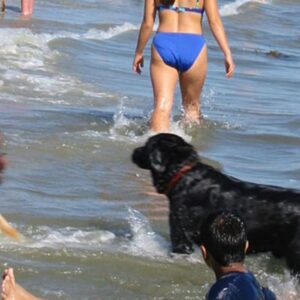The Jack Russell Terrier is one of the most popular small dog breeds in the world, renowned for its energetic nature, intelligence, and spirited personality. This breed has become a favorite among dog lovers due to its striking appearance, high energy levels, and fierce loyalty. However, like any breed, the Jack Russell comes with its own set of needs and considerations, especially when it comes to health, grooming, exercise, training, and nutrition. If you’re considering adopting a Jack Russell, or you’re already a proud owner, this guide will provide you with everything you need to know about the Jack Russell Terrier breed.
What is a Jack Russell Terrier?
The Jack Russell Terrier, often simply called the “Jack Russell,” is a small, agile dog originally bred for hunting foxes in the United Kingdom. This breed is a terrier, which means it has a strong prey drive, intelligence, and an independent streak. Known for its vibrant and bold personality, the Jack Russell is not a dog for everyone. They are alert, fearless, and sometimes stubborn, making them both a joy and a challenge to train.
Key Characteristics of the Jack Russell Terrier:
- Size: Typically, Jack Russells stand between 10 to 15 inches (25 to 38 cm) at the shoulder and weigh between 13 to 17 pounds (5.9 to 7.7 kg).
- Coat: Their coat comes in three varieties: smooth, rough, and broken. Each type requires slightly different grooming.
- Temperament: They are energetic, intelligent, alert, and fearless. Jack Russells can sometimes be vocal and stubborn, but they are also very loyal and affectionate with their families.
- Life Expectancy: The Jack Russell has a long lifespan, typically living between 13 and 16 years.
Health of the Jack Russell Terrier
As a breed, Jack Russells are generally healthy, but they can be prone to specific health issues. Being aware of these can help you take preventative measures to ensure your dog lives a long, healthy life.
Common Health Issues in Jack Russells:
- Patellar Luxation: This condition occurs when the kneecap dislocates from its normal position, leading to pain or limping. It can usually be managed with medication or surgery if severe.
- Deafness: Jack Russells are among the breeds that may be more prone to congenital deafness, especially in puppies with predominantly white coats. Regular vet check-ups and early detection can help manage this condition.
- Legg-Calvé-Perthes Disease: A disease affecting the hip joint, it typically causes lameness in young dogs. Surgery is often necessary to alleviate pain and improve mobility.
- Eye Issues: Jack Russells can be prone to eye problems such as cataracts, glaucoma, and progressive retinal atrophy (PRA), which can lead to vision impairment or blindness.
- Allergies: Like many small dogs, Jack Russells can suffer from food allergies or environmental allergies, leading to skin irritations or digestive issues.
Preventative Health Care:
- Regular Vet Check-ups: Routine check-ups are vital to monitor your Jack Russell’s health and catch any potential issues early.
- Vaccinations: Keep up to date with vaccinations to protect against diseases like rabies, parvovirus, and distemper.
- Parasite Prevention: Regular treatments for fleas, ticks, and worms are crucial in maintaining your dog’s health.
Grooming Your Jack Russell Terrier
Jack Russells have a variety of coat types, including smooth, rough, and broken coats. Each type has different grooming needs, but all Jack Russells require regular care to maintain their coat and skin health.
1. Smooth Coat: The smooth-coated Jack Russell has short, dense fur that lies flat against the skin. While this coat type requires less grooming than rough or broken coats, regular brushing can help remove loose hairs and prevent shedding. A rubber grooming mitt can be helpful in removing excess fur.
2. Rough Coat: Rough-coated Jack Russells have longer, wiry hair. To prevent their coat from becoming matted, they require regular brushing at least once or twice a week. Hand-stripping is often recommended for this coat type, which involves pulling out the old hair to make room for new growth.
3. Broken Coat: A broken coat is a combination of the smooth and rough coat types, with some longer, wiry hairs mixed in with the shorter hairs. It requires regular brushing and occasional hand-stripping to keep it looking neat.
General Grooming Tips:
- Bathing: Bathe your Jack Russell every 4 to 6 weeks, or as needed, to keep their coat clean and healthy. Avoid over-bathing, as it can strip the skin of natural oils.
- Nail Trimming: Trim your dog’s nails regularly to avoid overgrowth, which can lead to discomfort or injury. Aim to trim them every 3-4 weeks.
- Ear Cleaning: Check your Jack Russell’s ears weekly for dirt or wax buildup, especially if they have floppy ears. Clean them gently with a vet-approved ear cleaner.
- Teeth Brushing: Dental health is often overlooked but is crucial for your dog’s overall well-being. Brush your Jack Russell’s teeth at least 2-3 times a week to prevent dental issues.
Exercise Requirements of the Jack Russell Terrier
As a high-energy breed, the Jack Russell Terrier requires ample physical activity and mental stimulation to stay healthy and happy. Without proper exercise, they may become bored, leading to destructive behavior.
Recommended Exercise Routine:
- Daily Walks: Jack Russells enjoy brisk walks and should be taken on a walk at least once or twice a day. A 30-minute walk is ideal to keep them fit.
- Interactive Play: They love to play, and activities like fetch, tug-of-war, or hide-and-seek can provide mental stimulation as well as physical exercise.
- Agility Training: Jack Russells excel in agility courses due to their intelligence and athleticism. Enrolling your dog in agility classes or setting up a DIY obstacle course in your yard is an excellent way to exercise both their body and mind.
- Running or Hiking: Jack Russells are great companions for more active owners. If you’re a runner or enjoy hiking, your Jack Russell will happily keep up with you.
It’s important to note that Jack Russells need to be mentally stimulated as much as physically. Puzzle toys, obedience training, and problem-solving games can help keep your dog engaged and prevent boredom.
Training Your Jack Russell Terrier


Training a Jack Russell Terrier can be both rewarding and challenging. This breed is highly intelligent, but their independent nature and strong prey drive can sometimes make them difficult to train. Early socialization and consistent, positive reinforcement training are key.
Training Tips for Jack Russells:
- Start Early: Begin training and socialization as soon as you bring your Jack Russell home. Expose them to various people, places, and situations to help them become well-adjusted adults.
- Positive Reinforcement: Jack Russells respond best to positive reinforcement, such as treats, praise, and toys. Harsh training methods or punishment can lead to fear and aggression.
- Short, Frequent Sessions: Jack Russells have a short attention span, so keep training sessions short (10-15 minutes) but frequent, ideally multiple times a day.
- Consistency: Be consistent with commands and expectations. Jack Russells thrive on routine and will quickly learn what is expected of them.
- Socialization: Expose your Jack Russell to other dogs, pets, and new environments to avoid territorial or aggressive behavior. Early socialization can prevent behavioral issues later on.
- Leash Training: Jack Russells have a strong prey drive, and they may try to chase after small animals. Start leash training early to prevent pulling or darting off during walks.
Dealing with Common Behavioral Issues:
- Barking: Jack Russells are naturally vocal dogs, but excessive barking can be managed with proper training. Reward quiet behavior and use commands like “quiet” to reduce unwanted barking.
- Separation Anxiety: This breed forms strong bonds with their owners, and some Jack Russells may experience separation anxiety. Providing them with safe toys or a crate can help ease their anxiety when you’re away.
Nutrition for the Jack Russell Terrier
Feeding your Jack Russell a well-balanced, high-quality diet is crucial for maintaining their energy levels, overall health, and longevity. Since Jack Russells are active dogs, they require a diet that supports their energy needs, muscle development, and skin and coat health.
Key Nutritional Considerations:
- Protein: Jack Russells require a diet rich in high-quality animal protein (chicken, beef, fish, etc.) to support their muscle mass and energy levels.
- Healthy Fats: Omega-3 and omega-6 fatty acids are essential for maintaining a healthy coat and skin. Look for dog food with added fish oils or flaxseed.
- Fiber: A diet that includes fiber can aid digestion and help prevent issues like constipation. Whole grains, vegetables, and fruits provide the necessary fiber.
- Vitamins and Minerals: Ensure your dog’s food includes a balanced mix of vitamins and minerals, such as calcium for strong bones and antioxidants to support the immune system.
Feeding Guidelines:
- Portion Control: Since Jack Russells are prone to obesity if overfed, portion control is essential. Follow the feeding guidelines on your dog food packaging and consult your vet for more specific recommendations based on your dog’s activity level.
- Meal Frequency: Adult Jack Russells typically eat twice a day, while puppies may need three meals a day until they are 6 months old.
- Fresh Water: Always ensure your Jack Russell has access to fresh, clean water throughout the day to stay hydrated.
Final Thoughts
The Jack Russell Terrier is a delightful and energetic breed, but they require careful attention to their health, grooming, exercise, training, and nutrition. By providing them with the care they need, you can ensure that your Jack Russell lives a long, happy, and healthy life. Whether you’re a first-time dog parent or a seasoned dog lover, understanding the unique needs of this breed is crucial for forming a lasting bond and ensuring your dog thrives.













